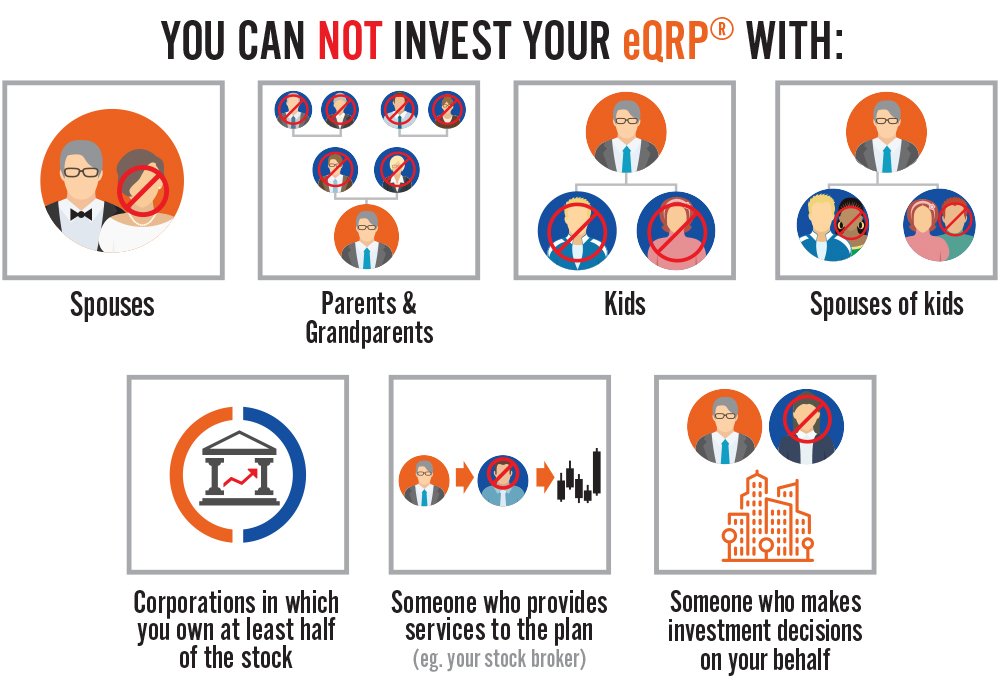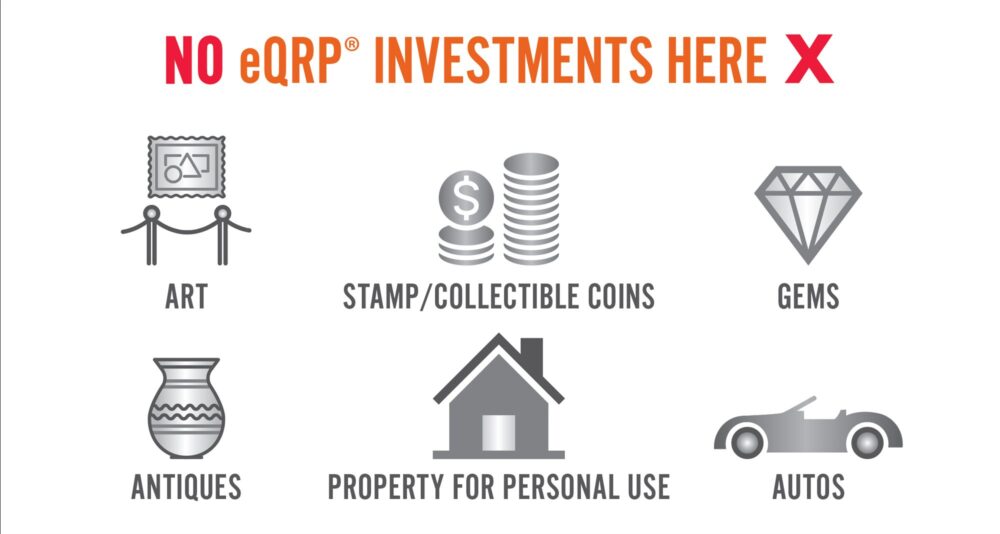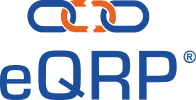eQRP FAQ®s
Instant answers to your eQRP® questions
What is an eQRP®?
It is a truly self-directed 401k plan that gives you total control over your retirement to invest in alternative assets with more variety and certainty than any other traditional platform in the market.
What can I invest in with an eQRP®?
You can use your eQRP® to invest in real estate, real gold, cryptocurrency, and so much more!
Can I roll over my existing 401(K) or IRA?
Yes! You may roll over most IRA, SEP IRA, SIMPLE IRA (after 2 years), 457(b), 403(b), Profit Sharing, and other Solo 401(k)s into your eQRP®.
What is the difference between a Solo 401(k) and an eQRP®?
As all cars may take you from A to B, not all cars are built the same. The eQRP® resides in section 401 of the IRS, but its different elements make its engine superior. You can have total control of your retirement, protection from lawsuits and hire employees at any time with an eQRP® – none of which is available with a solo plan. Plus you get a first-class team working for you to give you the support, education, and confidence you need to execute your retirement strategy.
Can I purchase Crypto with my eQRP®?
You can! Our team will walk you through the process on how you can acquire crypto with your eQRP® and let you ride one of the most exciting alternative asset classes around!
How long does it take to set up an eQRP®?
It typically takes us 10 business days to retrieve your money from Wall St. That is if they don’t give us any trouble trying to give you back your money.
What is my liability as a business owner to invest alternatively when I have employees?
The same risk you have with a traditional 401k plan. We help customers build a plan that suits the needs of your employees and for yourself with minimum liability.
Can I set up a plan for the previous calendar year?
Yes, you can!
Does the UBIT tax apply to this plan?
Only if you invest in an active business such as manufacturing plants, car washes, etc, the cashflow applies towards UBIT, but not the sale of the business.
Who is responsible for the reporting of my eQRP®?
Our team handles all 1099-R and 5500 Forms for you and your business.
I’m a real estate investor. Will I get hit with UBIT when I sell property like I did with my IRA?
No, the eQRP® is exempt from UBIT generated by Unrelated Debt Financed Income (UDFI)
Who can I invest my eQRP® with?

Visit the IRS Site (HERE) for information from Pub 560
You are disqualified for an eQRP® if you are any of the following.
- A fiduciary of the plan.
- A person providing services to the plan.
- An employer, any of whose employees are covered by the plan.
- An employee organization, any of whose members are covered by the plan.
- Any direct or indirect owner of 50% or more of the following;
- The combined voting power of all classes of stock entitled to vote, or the total value of shares of all classes of stock of a corporation that is an employer or employee organization described in (3) or (4).
- The capital interest or profits interest of a partnership that is an employer or employee organization described in (3) or (4).
- The beneficial interest of a trust or unincorporated enterprise that is an employer or an employee organization is described in (3) or (4).
- A member of the family of any individual described in (1), (2), (3), or (5). (A family member is a spouse, ancestor, lineal descendant, or any spouse of a lineal descendant.)
- A corporation, partnership, trust, or estate of which (or in which) any direct or indirect owner described in (1) through (5) holds 50% or more of any of the following.
- The combined voting power of all classes of stock entitled to vote or the total value of shares of all classes of stock of a corporation.
- The capital interest or profits interest of a partnership.
- The beneficial interest of a trust or estate.
- An officer, director (or an individual having powers or responsibilities similar to those of officers or directors), a 10% or more shareholder, or highly compensated employee (earning 10% or more of the yearly wages of an employer) of a person described in (3), (4), (5), or (7).
- A 10% or more (in capital or profits) partner or joint venturer of a person described in (3), (4), (5), or (7).
- Any disqualified person, as described in (1) through (9) above, who is a disqualified person with respect to any plan to which a section 501(c)(22) trust is permitted to make payments under section 4223 of ERISA.
Tax on Prohibited Transactions The initial tax on a prohibited transaction is 15% of the amount involved for each year (or part of a year) in the tax period. If the transaction isn’t corrected within the tax period, an additional tax of 100% of the amount involved is imposed. For information on correcting the transaction, see Correcting a prohibited transaction later. Both taxes are payable by any disqualified person who participated in the transaction (other than a fiduciary acting only as such). If more than one person participates in the transaction, each person can be jointly and severally liable for the entire tax amount. The amount involved in a prohibited transaction is the greater of the following amounts.- The money and fair market value of any property given.
- The money and fair market value of any property received.
If services are performed, the amount involved is any excess compensation given or received. Tax period. The tax period starts on the transaction date and ends on the earliest of the following days.
- The day the IRS mails a notice of deficiency for the tax.
- The day the IRS assesses the tax.
- The day the correction of the transaction is completed.
Payment of the 15% tax. Pay the 15% tax with Form 5330. Correcting a prohibited transaction. If you are a disqualified person who participated in a prohibited transaction, you can avoid the 100% tax by correcting the transaction as soon as possible. Correcting the transaction means undoing it as much as possible without putting the plan in a worse financial position than if you had acted under the highest fiduciary standards—correction period. Suppose the prohibited transaction isn’t corrected during the tax period. In that case, you usually have an additional 90 days after the day the IRS mails a notice of deficiency for the 100% tax to correct the transaction. This correction period (the tax period plus the 90 days) can be extended if the following occurs.
- The IRS grants reasonable time needed to correct the transaction.
- You petition the Tax Court.
If you correct the transaction within this period, the IRS will abate, credit, or refund the 100% tax.
What is a prohibited transaction?

Visit the (IRS SITE)
Prohibited transactions are transactions between the plan and a disqualified person that are prohibited by law. (However, see Exemption next.) If you are a disqualified person who takes part in a prohibited transaction, you must pay a tax (discussed later).
Prohibited transactions generally include the following transactions.
- A transfer of plan income or assets to, or use of them by or for the benefit of, a disqualified person.
- Any act of a fiduciary by which he or she deals with plan income or assets in his or her own interest.
- The receipt of consideration by a fiduciary for his or her own account from any party dealing with the plan in a transaction that involves plan income or assets.
- Any of the following acts between the plan and a disqualified person.
a. Selling, exchanging, or leasing property.
b. Lending money or extending credit.
c. Furnishing goods, services, or facilities.
Exemption.
Certain transactions are exempt from being treated as prohibited transactions. For example, a prohibited transaction doesn’t occur if you are a disqualified person and receive any benefit to which you are entitled as a plan participant or beneficiary. However, the benefit must be figured out and paid under the same terms as for all other participants and beneficiaries. For other exempt transactions, see section 4975 and the related regulations.
Tax on Prohibited Transactions
The initial tax on a prohibited transaction is 15% of the amount involved for each year (or part of a year) in the tax period. If the transaction isn’t corrected within the tax period, an additional tax of 100% of the amount involved is imposed. For information on correcting the transaction, see Correcting a prohibited transaction, later.
Both taxes are payable by any disqualified person who participated in the transaction (other than a fiduciary acting only as such). If more than one person takes part in the transaction, each person can be jointly and severally liable for the entire tax.
Amount involved.
The amount involved in a prohibited transaction is the greater of the following amounts.
- The money and fair market value of any property given.
- The money and fair market value of any property received.
If services are performed, the amount involved is any excess compensation given or received.
Tax period.
The tax period starts on the transaction date and ends on the earliest of the following days.
- The day the IRS mails a notice of deficiency for the tax.
- The day the IRS assesses the tax.
- The day the correction of the transaction is completed.
Payment of the 15% tax.
Pay the 15% tax with Form 5330.
Correcting a prohibited transaction.
If you are a disqualified person who participated in a prohibited transaction, you can avoid the 100% tax by correcting the transaction as soon as possible. Correcting the transaction means undoing it as much as you can without putting the plan in a worse financial position than if you had acted under the highest fiduciary standards.
Correction period.
Suppose the prohibited transaction isn’t corrected during the tax period. In that case, you usually have an additional 90 days after the day the IRS mails a notice of deficiency for the 100% tax to correct the transaction. This correction period (the tax period plus the 90 days) can be extended if either of the following occurs.
- The IRS grants reasonable time needed to correct the transaction.
- You petition the Tax Court.
If you correct the transaction within this period, the IRS will abate, credit, or refund the 100% tax.
What can I invest in with my eQRP® ?

What can I invest in with my eQRP?
- Syndications
- Real Estate with or without DEBT and NO UDFI for leveraged investments!
Rentals - Flips
- Mobile home parks
- Apartments
- LandForeign Land
- REAL Gold, Silver & Platinum you can hold, not stuck in a vault somewhere or an ETF
- Cryptocurrency
- Oil & Gas
- Private Equity
- Hard money lending (be the bank)
- Options
- Franchises
- And on and on and on…
WHAT CAN’T I INVEST IN WITH MY EQRP?
Things like classic cars, art, and property for your own use. Learn more about disqualified investments.
Are my self-directed eQRP investments guaranteed?
No investment (aside for FDIC-insured deposits) is guaranteed. However, most successful investors feel that the risk of investing in assets they know and understand is much less than the risk associated with making only “traditional” Wall Street investments in a market they can’t control that is manipulated with fees eating the lion’s share of the gains.
Download The QRP Book Summary
Learn how to take action to help you reach financial freedom!
Fill out the form below so I can email this to you right now!
Feeling lost with how to unlock your 401 (k)?
Get my FREE book on how to take checkbook control of your 401 (k) and IRA to help you have financial freedom.
Fill out the form below so I can FedEx you the book right away!

